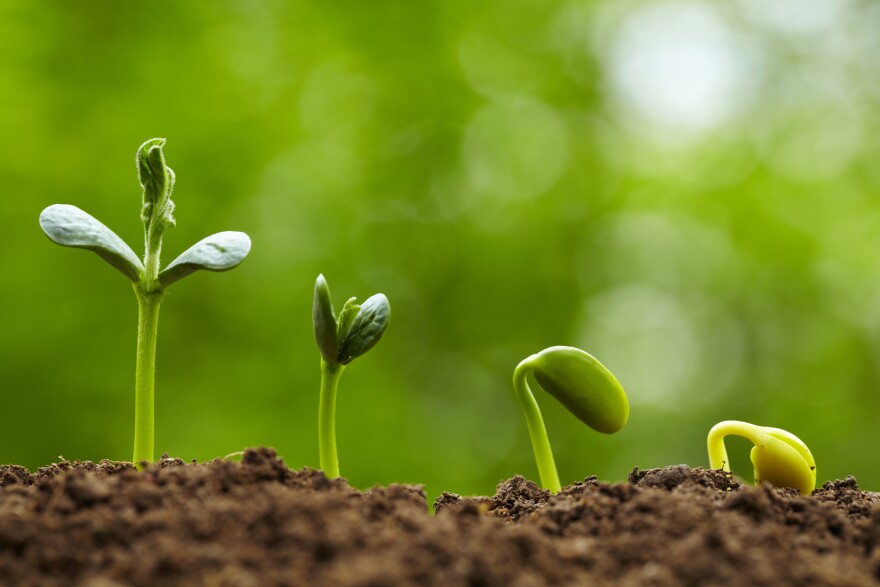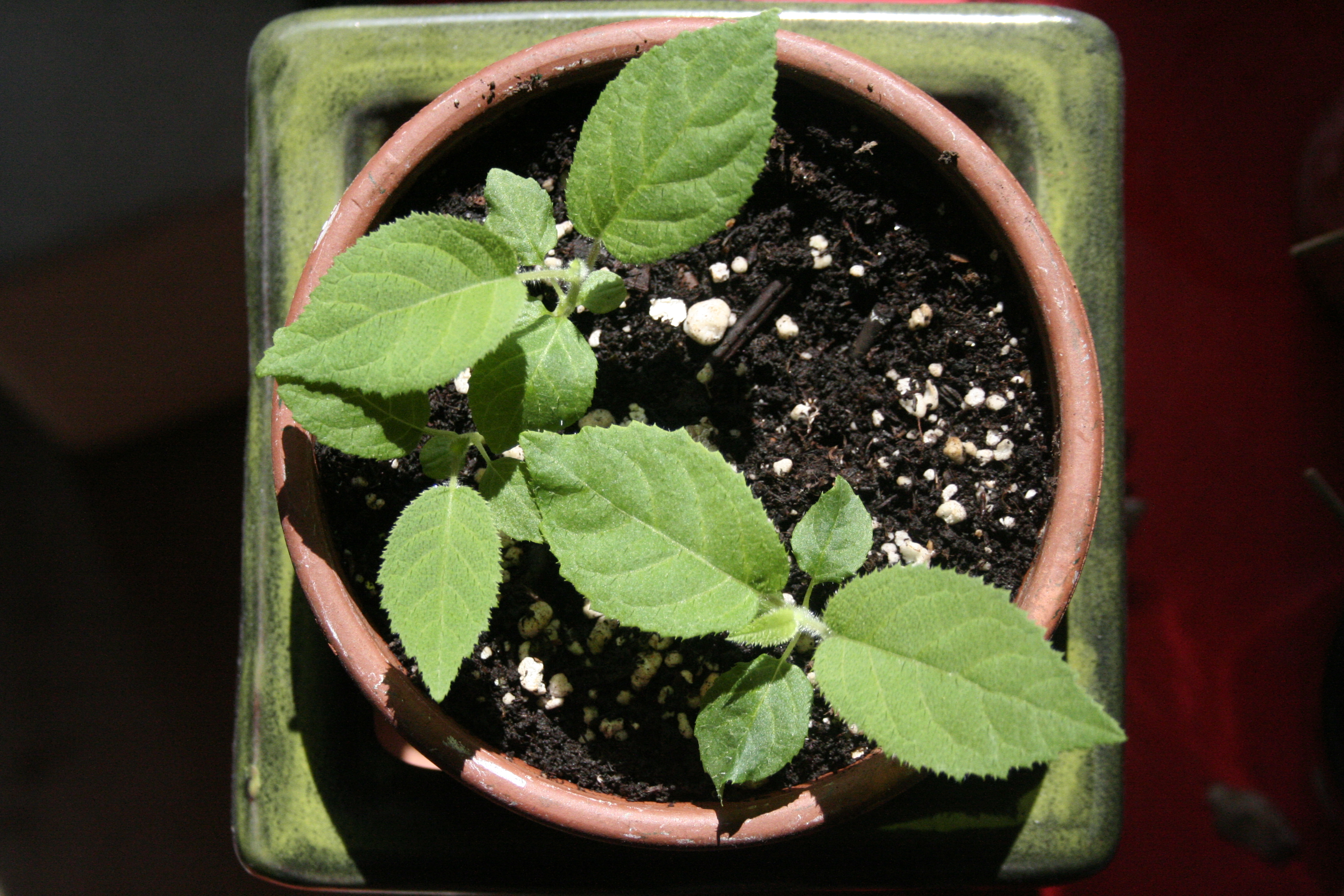How to Grow Small Plants from Seeds?
Growing small plants from seeds can be easy and rewarding. You just need a few steps and some patience.
This guide will show you how to start your own garden from scratch. Starting with seeds is a great way to grow plants. It’s cost-effective, and you can choose from a wide variety of plants. Plus, watching seeds sprout and grow is exciting.
You don’t need a green thumb to succeed. With the right tips and some basic care, anyone can do it. This blog post will cover all you need to know, from selecting seeds to nurturing your young plants. Follow along, and you’ll have thriving small plants in no time!
Choosing The Right Seeds
Choosing the right seeds is crucial for successful plant growth. Selecting seeds can seem overwhelming with so many options available. This section will guide you in making an informed choice.
Heirloom Vs. Hybrid
There are two main types of seeds: heirloom and hybrid. Heirloom seeds come from plants that have been grown for many generations. They are open-pollinated, meaning they produce plants true to type.
Hybrid seeds are created by cross-pollinating two different plants. This process combines the best traits of both plants. Hybrids often have improved disease resistance and higher yields. But they do not produce true-to-type plants.
Germination Rate
The germination rate is the percentage of seeds that sprout. A higher germination rate means more seeds will grow into plants. Always check the seed packet for the germination rate.
Fresh seeds usually have a higher germination rate. Older seeds may still grow but at a lower rate. Proper storage also affects the germination rate. Store seeds in a cool, dry place.
Preparing The Soil
Growing small plants from seeds can be a rewarding experience. The first step in the process is preparing the soil. Healthy soil is essential for seed germination and plant growth. It provides necessary nutrients and support for the plants. Properly prepared soil will increase the chances of successful growth.
Soil Composition
The composition of the soil is crucial for the growth of small plants. Soil should be a mix of organic matter, sand, and clay. Each component plays a role. Organic matter provides nutrients. Sand improves drainage. Clay helps retain moisture.
| Component | Function |
|---|---|
| Organic Matter | Provides nutrients |
| Sand | Improves drainage |
| Clay | Retains moisture |
You can buy pre-mixed soil or make your own. For homemade soil, mix equal parts of compost, sand, and garden soil. Ensure the mix is loose and crumbly. This texture helps roots grow easily.
Sterilizing The Soil
Before planting seeds, it’s important to sterilize the soil. This step removes any harmful organisms. There are several ways to sterilize soil.
- Place soil in an oven-safe container.
- Heat the soil at 180°F for 30 minutes.
- Let the soil cool before using it.
You can also use a microwave to sterilize soil. Place soil in a microwave-safe container. Heat on high for 10 minutes. Let it cool before planting seeds.
Sterilizing the soil ensures a healthy start for your seeds. It prevents diseases and pests from harming young plants. This step is essential for successful seed germination and growth.
Planting The Seeds
Growing plants from seeds can be very rewarding. It’s a great way to start your garden. It all begins with planting the seeds correctly. This step is crucial for healthy plant growth. Let’s explore the key aspects of planting seeds.
Sowing Depth
The depth at which you sow seeds is important. Different seeds need different depths. Check the seed packet for specific instructions. Generally, plant seeds twice as deep as their size. Small seeds need shallow planting. Large seeds go deeper. This ensures proper germination.
Spacing
Proper spacing is vital for plant health. Crowded plants compete for resources. This leads to weak growth. Follow the recommended spacing on the seed packet. Give each seed enough room to grow. This promotes strong, healthy plants. Spacing helps avoid diseases and pests too.

Credit: www.vermontpublic.org
Watering Techniques
Watering small plants grown from seeds is crucial. It ensures their healthy growth. Too much or too little water can harm the plants. Understanding the best watering techniques can make a difference. Let’s explore the right ways to water these delicate plants.
Moisture Levels
Soil moisture is key for seed germination. The soil should be damp, not soaked. Seeds need consistent moisture to sprout. Dry soil can stop seeds from growing. Wet soil can cause rot. Check the soil often. Keep it moist but not soggy.
Watering Schedule
Set a regular watering schedule. Water the seeds daily in the morning. This helps the soil stay moist through the day. Avoid watering at night. Wet soil at night can lead to mold. Observe the plants as they grow. Adjust the schedule if needed.
Providing Adequate Light
Growing small plants from seeds can be rewarding. But, ensuring they get enough light is crucial. Plants need light to grow strong and healthy. Whether you use natural light or grow lights, understanding their needs is key.
Natural Light
Natural light is the simplest and most cost-effective option. Place your seed trays near a sunny window. South-facing windows are ideal. They get the most sunlight during the day.
Ensure the light is consistent. Inconsistent light can make seedlings weak. Rotate the trays every few days. This helps plants grow straight and strong.
| Window Direction | Light Quality | Recommended Plants |
|---|---|---|
| South | High | Most vegetables, herbs |
| East | Moderate | Leafy greens, herbs |
| West | Moderate | Flowers, herbs |
| North | Low | Shade-loving plants |
Grow Lights
Grow lights are a great alternative if natural light is limited. They provide a consistent light source. Choose LED or fluorescent grow lights. These are energy-efficient and effective.
Place the lights 2-4 inches above the seedlings. Adjust the height as the plants grow. Keep the lights on for 12-16 hours daily. Use a timer for convenience.
- Select the right type of grow light (LED or fluorescent).
- Set up the lights close to the seedlings.
- Adjust the height as the plants grow.
- Ensure the lights are on for 12-16 hours.
Using grow lights can be a game-changer. They provide the needed light for healthy growth, even in low-light conditions.

Credit: www.youtube.com
Maintaining Temperature And Humidity
Growing small plants from seeds can be fun and rewarding. But, controlling the temperature and humidity is crucial for their growth. Proper temperature and humidity ensure the seeds germinate well and the plants grow healthy. Below, we discuss the optimal temperature range and how to control humidity for your seeds.
Optimal Temperature Range
Most seeds need a specific temperature to germinate. The optimal temperature range for many seeds is between 65°F and 75°F (18°C – 24°C). This range helps seeds sprout and grow strong. Use a thermometer to monitor the temperature. Keeping the soil warm is key. A seedling heat mat can help maintain a consistent temperature.
Below is a table showing the ideal temperature for common seeds:
| Seed Type | Optimal Temperature (°F) |
|---|---|
| Tomato | 70-75 |
| Peppers | 75-80 |
| Beans | 65-75 |
Humidity Control
Humidity plays a vital role in seed germination. Seeds need a humid environment to sprout. The air around the seeds should be moist but not too wet. A humidity level of 50% to 70% is ideal. To maintain this, use a humidity dome or cover the seed tray with plastic wrap.
Here are some tips to control humidity:
- Mist the soil with water regularly.
- Keep the seed tray in a warm, humid place.
- Use a humidifier if the air is too dry.
Monitoring and adjusting humidity ensures seeds have the right environment to grow. Too much moisture can cause mold, so balance is essential.
Fertilizing The Seedlings
Fertilizing the seedlings is a vital step in growing healthy small plants from seeds. Seedlings need the right nutrients to develop strong roots and vibrant leaves. The right fertilization strategy ensures your plants get a good start and thrive.
Types Of Fertilizer
There are several types of fertilizer you can use for seedlings. Organic fertilizers, like compost or fish emulsion, are gentle and provide essential nutrients. Synthetic fertilizers are another option. They offer precise nutrient control but can be stronger.
Water-soluble fertilizers are easy to use and quickly absorbed. Granular fertilizers, on the other hand, release nutrients slowly over time. Choose a balanced fertilizer with equal parts nitrogen, phosphorus, and potassium. This balance supports overall seedling health.
Application Frequency
Apply fertilizer to seedlings at the right times. Too much can harm young plants. Begin fertilizing once seedlings develop their first set of true leaves. This indicates they are ready for additional nutrients.
Water-soluble fertilizers can be used every two weeks. Dilute them to half the recommended strength to avoid burning the seedlings. Granular fertilizers should be applied less often, about once a month. Always follow the instructions on the fertilizer packaging.
Observe your seedlings for signs of nutrient deficiency. Yellowing leaves may indicate a need for more fertilizer. Adjust the frequency if needed to ensure healthy growth.

Credit: growingwildceeds.wordpress.com
Transplanting The Seedlings
Transplanting seedlings is a crucial step in growing plants from seeds. It ensures your young plants get the best start in their new environment. This process involves several steps, each important for healthy plant growth.
Hardening Off
Before transplanting, harden off your seedlings. This means gradually introducing them to outdoor conditions. Start by placing them outside for a few hours each day. Increase this time over a week or two.
- Day 1-2: 2 hours of morning sun
- Day 3-4: 4 hours of morning sun
- Day 5-6: 6 hours of morning sun
- Day 7-8: Full day exposure
This helps plants adjust to wind, sunlight, and temperature changes. Hardening off reduces transplant shock and promotes stronger growth.
Choosing The Right Time
Timing is key for successful transplanting. Choose a cloudy day or late afternoon to transplant. This reduces stress on the plants. Avoid transplanting during the heat of the day.
| Condition | Ideal Time |
|---|---|
| Cloudy Weather | Anytime |
| Sunny Weather | Late Afternoon |
Check the last frost date in your area. Transplant only after the danger of frost has passed. Planting too early can damage your seedlings.
- Check the weather forecast.
- Prepare your garden bed or container.
- Water the seedlings well before transplanting.
These steps ensure your seedlings thrive in their new home. Proper timing and preparation are essential for a successful transplant.
Frequently Asked Questions
How Do You Start Small Plants From Seeds?
Start by selecting quality seeds and using well-draining soil. Plant seeds at the recommended depth, keep the soil moist, and ensure they get plenty of light.
What Is The Best Soil For Starting Seeds?
The best soil for starting seeds is a lightweight, well-draining seed-starting mix. It provides the right conditions for germination and root growth.
How Often Should You Water Seeds?
Water seeds gently and keep the soil consistently moist. Avoid overwatering by checking the soil daily and watering lightly as needed.
When Should You Transplant Seedlings?
Transplant seedlings when they have at least two true leaves. Ensure the outdoor conditions are suitable for the plant’s growth.
Conclusion
Growing small plants from seeds is a rewarding experience. With patience and care, anyone can do it. Start with quality seeds and good soil. Water them regularly, but don’t overdo it. Ensure they get enough sunlight. Watch them sprout and grow.
It’s a simple, fulfilling way to enjoy nature. Plus, you get to see life bloom from tiny seeds. Happy gardening!




